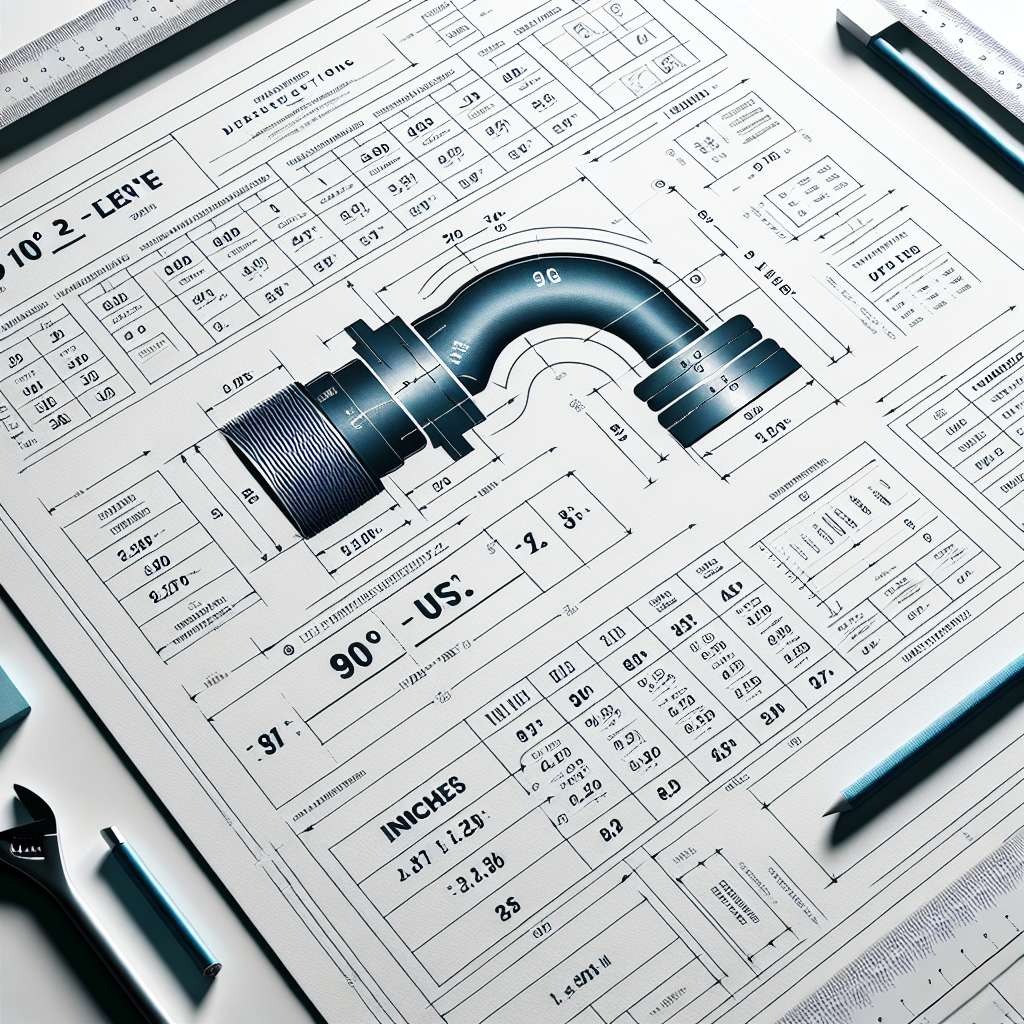Wondering how to get the perfect dimensions for your plumbing or HVAC project? Understanding the dimensions of 90-degree elbows is crucial for professionals like you. Our comprehensive guide will walk you through everything you need to know, offering practical insights, clear explanations, and a handy dimensions chart PDF in inches.
Why 90-Degree Elbows Matter
90-degree elbows are essential components in various applications, from plumbing systems to HVAC installations. They allow pipes to change direction smoothly, ensuring efficient flow and space optimization. Without understanding their dimensions, you risk improper fittings that can compromise your entire setup.
What is a 90-Degree Elbow?
A 90-degree elbow is a pipe fitting that allows the pipe to make a right-angle turn. These fittings come in various sizes and materials, making them versatile for different types of systems. They are widely used in plumbing, HVAC, and industrial applications to change the flow direction without causing significant resistance.
Types of 90-Degree Elbows
Long Radius vs. Short Radius
One crucial aspect to consider is whether you need a long radius or short radius elbow. Long radius elbows have a center-to-end distance that is 1.5 times the pipe diameter, offering smoother flow and less resistance. Short radius elbows, on the other hand, have a center-to-end distance equal to the pipe diameter and are suitable for tight spaces.
Material Considerations
90-degree elbows come in various materials, including stainless steel, copper, and PVC. Your choice of material will depend on the application and the type of fluid or gas passing through the system. For example, stainless steel elbows are ideal for high-pressure applications, while PVC elbows are commonly used in low-pressure plumbing systems.
Size Variations
These elbows come in a range of sizes, typically measured in inches. The size you choose will depend on the diameter of the pipe you’re working with. Accurate measurement is crucial to ensure a perfect fit and optimal performance.
How to Measure a 90-Degree Elbow
Length Measurement
To measure the length of a 90-degree elbow, you need to determine the distance from the centerline of one end to the outer edge of the other end. This measurement ensures that the elbow will fit correctly within your piping system.
Radius Calculation
The radius of a 90-degree elbow is another critical measurement. The formula for calculating the radius is straightforward:
\[ \text{Radius} = \text{Pipe Diameter} \times 1.5 \]
This formula applies to long radius elbows. For short radius elbows, the radius is equal to the pipe diameter.
Angle Verification
While it’s labeled as a 90-degree elbow, verifying the angle is always a good practice. Use a protractor or angle finder to ensure that the elbow forms a perfect right angle, which is crucial for maintaining the system’s integrity.
The Importance of a Dimensions Chart
Easy Reference
Having a dimensions chart at your disposal simplifies the process of selecting the appropriate elbow size. It provides quick access to essential measurements, eliminating the guesswork and reducing the risk of errors.
Standardized Measurements
A standardized dimensions chart ensures consistency across your projects. It helps maintain uniformity, especially when working with multiple team members or different contractors.
Versatility
A comprehensive dimensions chart covers a wide range of sizes and types, making it versatile for various applications. Whether you’re working on a small residential project or a large industrial installation, the chart will have you covered.
Downloadable PDF for Quick Access
We’ve compiled all the essential measurements into an easy-to-use PDF. This downloadable chart includes dimensions in inches for different sizes and types of 90-degree elbows, making it a valuable resource for any professional.
[Download your 90-Degree Elbow Dimensions Chart PDF in Inches]
Common Applications of 90-Degree Elbows
Plumbing Systems
In plumbing, 90-degree elbows are used to change the direction of water flow. They are essential for navigating around obstacles and ensuring efficient water distribution throughout a building.
HVAC Installations
HVAC systems rely on these elbows to direct airflow efficiently. Properly sized and installed elbows minimize resistance and ensure optimal performance of heating and cooling systems.
Industrial Pipelines
In industrial settings, 90-degree elbows are used in pipelines to handle various fluids and gases. They are designed to withstand high pressure and temperature, ensuring the system’s durability and reliability.
Troubleshooting Common Issues
Leaks and Seals
One common issue with 90-degree elbows is leaks. Ensure that all connections are securely tightened and use appropriate sealants to prevent any leakage. Regular maintenance checks can help identify and resolve leaks early.
Misalignment
Misalignment can cause significant problems in piping systems. Always double-check your measurements and use alignment tools to ensure that the elbow is correctly positioned within the system.
Wear and Tear
Over time, 90-degree elbows can experience wear and tear, especially in high-pressure or high-temperature applications. Regular inspections and timely replacements are crucial for maintaining the system’s integrity.
Future Trends in Elbow Design
Advanced Materials
The future of 90-degree elbows lies in advanced materials that offer better durability and performance. Innovations in material science are leading to the development of elbows that can withstand extreme conditions, making them suitable for a wider range of applications.
Smart Fittings
Smart fittings equipped with sensors are becoming more common, allowing for real-time monitoring of the system’s performance. These innovations can help detect issues early and optimize the overall efficiency of the piping system.
Eco-Friendly Options
With a growing focus on sustainability, eco-friendly 90-degree elbows made from recyclable materials are gaining popularity. These options not only reduce environmental impact but also offer excellent performance and durability.
Conclusion
Mastering the essentials of 90-degree elbow dimensions is crucial for plumbers, HVAC technicians, and engineers. By understanding the different types, measurements, and applications, you can ensure that your projects run smoothly and efficiently. Don’t forget to download our handy dimensions chart PDF for quick reference.
Explore more about how 90-degree elbows can enhance your projects and simplify your work. Join our community of professionals who trust in the power of accurate measurements and high-quality fittings.

